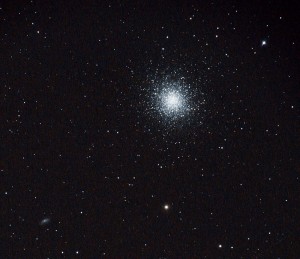My first night out imaging with the new telescope and filters was an eye opener for me. Focusing was a little more challenging and the added interconnections not only added weight to be factored in the overall balance, but also some flexure potential in the optical path. The biggest unexpected thing was the serious vignetting of the frame edges due to the light passing through the 1.25″ filter wheel onto a full frame 24mm x 36mm sensor. This is just something I’m going to have to deal with for a bit until I can find a better solution. Smaller targets being centered has become more important and larger targets are not as desirable due to the limitation in my FOV. I’m not certain at this point if spending the extra money on a 2″ filter rig would have prevented this or not.
My first stab at grabbing a couple of targets ended with 50/50 results. I initially tried to image M63, but the data just didn’t pan out. I had something terribly wrong and didn’t notice until I did the integration later.
I did manage a few short subs of M13. This is my first attempt at Messier 13 (NGC 6205), the Great Globular Cluster in Hercules and also my first integration with the new telescope. NGC 6207 is also visible in the lower left of the frame, so I intentionally didn’t crop this out. M13 was discovered by Edmond Halley in 1714, and cataloged by Charles Messier on June 1, 1764. M13 is about 145 light-years in diameter, and it is composed of several hundred thousand stars, the brightest of which is the variable star V11 with an apparent magnitude of 11.95. M13 is located 25,100 light-years from Earth.

